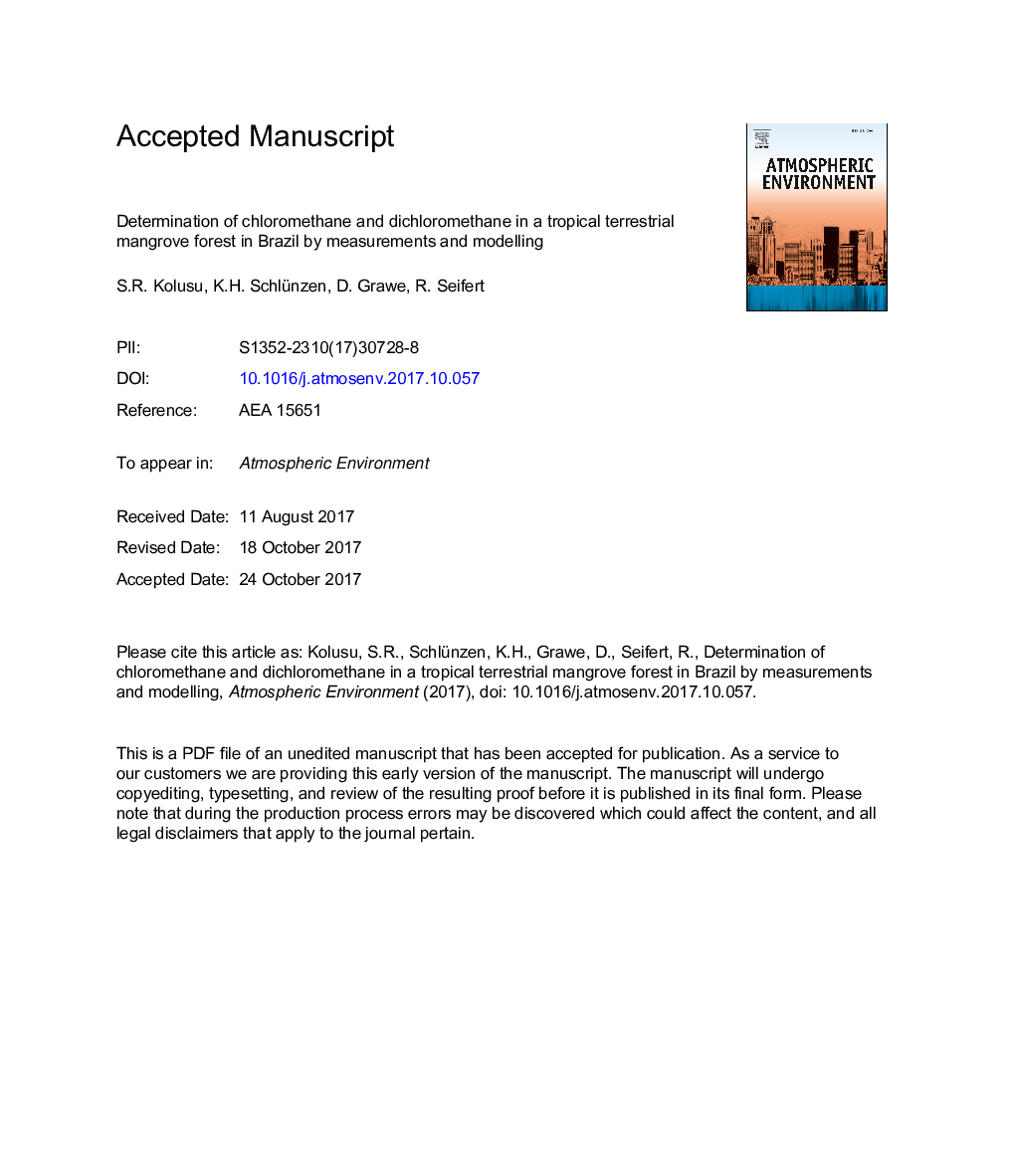| کد مقاله | کد نشریه | سال انتشار | مقاله انگلیسی | نسخه تمام متن |
|---|---|---|---|---|
| 8864279 | 1620301 | 2018 | 25 صفحه PDF | دانلود رایگان |
عنوان انگلیسی مقاله ISI
Determination of chloromethane and dichloromethane in a tropical terrestrial mangrove forest in Brazil by measurements and modelling
ترجمه فارسی عنوان
تعیین کلره مشتمل و کلر ماترآهن در جنگلهای حرا گرم زمینی گرمسیری در برزیل با اندازه گیری و مدل سازی
دانلود مقاله + سفارش ترجمه
دانلود مقاله ISI انگلیسی
رایگان برای ایرانیان
موضوعات مرتبط
مهندسی و علوم پایه
علوم زمین و سیارات
علم هواشناسی
چکیده انگلیسی
Chloromethane (CH3Cl) and dichloromethane (CH2Cl2) are known to have both natural and anthropogenic sources to the atmosphere. From recent studies it is known that tropical and sub tropical plants are primary sources of CH3Cl in the atmosphere. In order to quantify the biogenic emissions of CH3Cl and CH2Cl2 from mangroves, field measurement were conducted in a tropical mangrove forest on the coast of Brazil. To the best of our knowledge these field measurements were the first of its kind conducted in the tropical mangrove ecosystem of Braganca. A mesoscale atmospheric model, MEsoscale TRAnsport and fluid (Stream) model (METRAS), was used to simulate passive tracers concentrations and to study the dependency of concentrations on type of emission function and meteorology. Model simulated concentrations were normalized using the observed field data. With the help of the mesoscale model results and the observed data the mangrove emissions were estimated at the local scale. By using this bottom-up approach the global emissions of CH3Cl and CH2Cl2 from mangroves were quantified. The emission range obtained with different emission functions and different meteorology are 4-7 Gg yrâ1 for CH3Cl and 1-2 Gg yr2 for CH2Cl2. Based on the present study the mangroves contribute 0.3 percent of CH2Cl2 and 0.2 percent of CH3Cl in the global emission budget. This study corroborates the study by Manley et al. (2007) which estimated that mangroves produce 0.3 percent of CH3Cl in the global emission budget. Although they contribute a small percentage in the global budget, their long lifetime enables them to contribute to the destruction of ozone in the stratosphere. From the detailed analyses of the model results it can be concluded that meteorology has a larger influence on the variability of concentrations than the temporal variability of the emission function.
ناشر
Database: Elsevier - ScienceDirect (ساینس دایرکت)
Journal: Atmospheric Environment - Volume 173, January 2018, Pages 185-197
Journal: Atmospheric Environment - Volume 173, January 2018, Pages 185-197
نویسندگان
S.R. Kolusu, K.H. Schlünzen, D. Grawe, R. Seifert,
